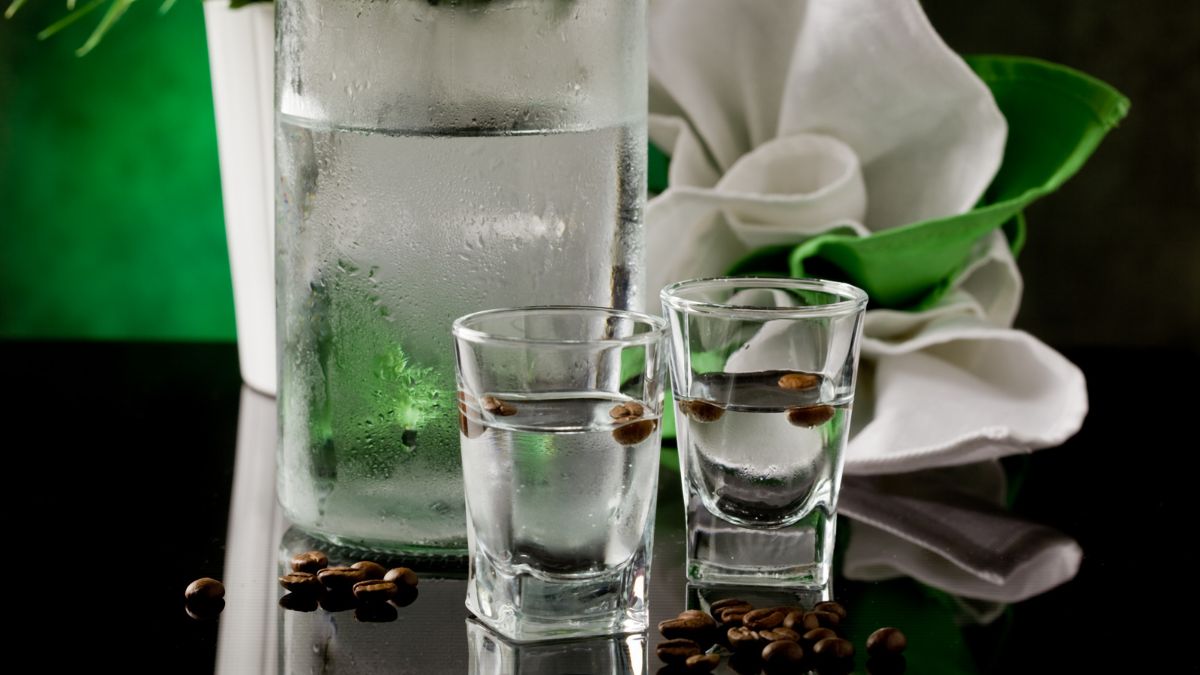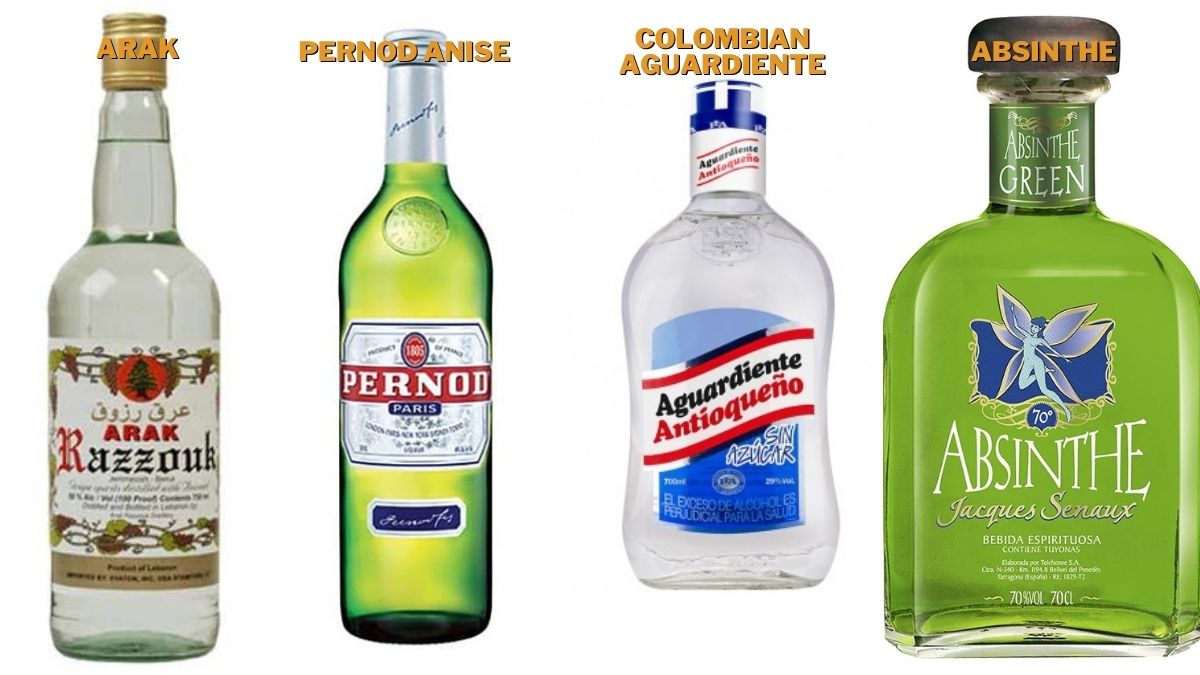15 Sambuca Substitutes I Found!

Knowing how to find a substitute for your favorite liqueur is always important, and Sambuca is no exception. Trust me, whether you’ve simply run out or can’t find a bottle in stores, knowing the next best thing to grab can save the day. So what are the Sambuca substitutes?
Because Sambuca is an anise-based liqueur, products such as Galliano, Ouzo, and Pastis can help in a pinch. That’s because they’re also made from anise, ensuring the flavor stays close to the product you’re replacing. Of non-anise Sambuca substitutes, there are Green or Yellow Chartreuse, Aquavit, Mastika, and Kummel.
I’ve named only three anise-based substitutes so far, so let’s explore them in detail and find out what makes them a good choice.
Here’s What Sambuca Tastes Like
Before you decide what to pick as your preferred Sambuca substitute, we should take a quick look at its flavor and ingredients. Knowing this information can save you a lot of trial and error while ensuring that you don’t just pick a random substitute.
Sambuca is made from the star or green anise extracts mixed with alcohol and sugar to create a liqueur. It’s usually clear, but you’ll find colored variants such as red, green, blue, or even black!
As for its taste, Sambuca has a pronounced licorice flavor, thanks to the anise. The sweetness of the sugar then chases it before closing itself with some sharp berry and herbal notes.
Anise-Based Sambuca Substitutes
Now that you know what Sambuca tastes like let’s see what substitutes are the best choice without compromising the flavor.
Galliano
Although the name “Galliano” is the brand itself, it’s still a different Italian liqueur on its own. It’s pretty similar to Sambuca because of its use of anise; however, Galliano has a predominantly vanilla flavor.
If you think Sambuca’s licorice-forward taste is a bit strong, try Galliano. I absolutely enjoy its sweeter vanilla taste, and there’s no doubt you will, too!
Ouzo
Ouzo is a Greek version of Sambuca but is more robust and without sugar. It’s also flavored with anise but with rectified spirits, making this liquor more potent than other anise-based products.
The European Union designated Ouzo as a protected brand, so only Greece and Cyprus can manufacture this product and call it such.
If you’re chasing that particular licorice flavor, give Ouzo a try.
Arak
Not to be confused with arrack (made from sugarcane) and araqi (made from dates), arak is a grape and anise-based liquor from Western Asia. Aniseeds are distilled with grape alcohol, imparting a more robust licorice flavor than other anise-based liquor. This drink is also unsweetened, which is welcome news for those watching their calories.
Pastis
France also couldn’t escape anise because they made their own anise-flavored spirit called Pastis. To distinguish it from other anise-based products, Pastis is made with licorice root and has less sugar (less than 100 grams per liter) than the other versions. [1]
This drink became popular 17 years after absinthe was banned and was commercialized in 1932. Nowadays, Pastis is a popular beverage in southern France, but you can find bottles of it throughout the country.
Anisette
Although “anisette” can indicate any spirit involving anise, it’s also a liqueur. Anisette is one of the lighter anise-based liqueurs with only 25 percent ABV compared to around 40 percent for other variants. [2]
Believe it or not, the anisette is also a French creation that predates Pastis by nearly 200 years! The liqueur was first formulated in 1775 and has been a recognized drink ever since.
Herbsaint
This New Orleans-originated drink has a fascinating history. A pharmacist named J.M. Legendre learned how to make absinthe in France during World War I, and he made a drink called “Legendre Absinthe” and launched it after the Prohibition repeal.
However, the US government did not like the word “absinthe” on the name, so Legedre changed it to “Legendre Herbsaint.”
Nowadays, the Sazerac company sells two kinds of Herbsaint: one with a modified recipe and one with Legendre’s original formulation. And both are great!
Pernod Anise
Pernod, also known as Pernod anise, is another French creation that distills anise into alcohol. Not to be confused with the spirits company of the same name, Pernod anise also uses fennel in its recipe, along with other herbs such as chamomile.
Even though Pernod anise is a French product, it’s still quite different from Pastis. Because, unlike Pastis, Pernod has a less pronounced licorice flavor.
Roiano
Roiano is another Italian-made liqueur that’s very similar to Galliano. This beverage is also made with anise, vanilla, and sweeteners. However, Roiano does use other herbs alongside anise and vanilla. Don’t expect to discover which herbs they are because they are supposedly proprietary information.
Colombian Aguardiente
Aguardiente is Colombia’s contribution to the world of anise-flavored spirits, but it’s important to note its origin. That’s because the word “aguardiente” is a catch-all word for any alcoholic beverage that has 29 to 60 percent ABV; it doesn’t necessarily mean it has anise.
Thankfully, Colombian aguardiente does contain anise; in fact, it’s made with water, alcohol, sugar, and anise. Each Colombian state makes its own aguardiente, so the brand you find in one state will not be in another.

Chinchón
Named after a community in Madrid, chinchón is made by soaking green anise seeds in alcohol and water. The finished product can be consumed as a drink, an additive to other beverages, or added to desserts.
But unlike Sambuca and other anise-based liqueurs, chinchón has varying sweetness levels: special dry, dry, and sweet. And while you think sweet chinchón is the perfect drink, it’s the dry one most locals prefer. Sweet chinchón is primarily added to baked sweets, and I recommend you try it out.
Absinthe
Of course, how can we forget the main spirit that drove several people to make absinthe-based alternatives during its banning? Thanks to its high alcohol content and supposed hallucinogenic effects, European countries and the United States banned this green spirit for a while. [3]
Thankfully, absinthe is making a resurgence, bringing back its anise and wormwood goodness to drinkers worldwide. Just make sure you’re careful with how much you consume.
Non-Anise Sambuca Substitutes
Not particularly a fan of anise? Or perhaps you’re not too bothered whether your Sambuca substitute is strictly anise-based? Don’t fret; I’ll give you four more suggestions that don’t necessarily have anise but can still hit the spot.
Green or Yellow Chartreuse
It’s fascinating to think that monks would formulate an alcoholic drink, but that’s what the Carthusian monks in the Chartreuse Mountains of France have been doing. They created a secret recipe using 130 herbs, bark, roots, and flowers to create a sweet liqueur.
And even though a large corporation now handles the global distribution of Chartreuse, the monks are still involved in the drinks’ creation.
As for the flavor, they’re slightly different. Green Chartreuse has more of a herbal and spicy note, while Yellow Chartreuse is more floral. My preferred one is definitely the Green one, but feel free to try both and decide your favorite for yourself.
Aquavit
Sometimes spelled as “Akwavit,” this is a Scandinavian spirit made with grain alcohol and herbs for flavor. It mainly uses caraway seeds for flavor, but some manufacturers also use fennel and anise. As a result, Aquavit can taste a bit spicier than usual despite adding sugar. One person described its flavor as “licorice cough syrup.”
Mastika
Mastika (or mastiha) is another Greek-made liqueur made from mastic resin. The mastic tree produces the resin, and distillers wait until the resin hardens before adding it to the product. The resulting distillation is then sweetened with sugar before being bottled for consumption.
Mastika is typically consumed after a meal, thanks to its sweet flavor with hints of pine and herbs.
Kummel
Formulated in the Netherlands in the 17th century before finding its way worldwide, kummel is an herbal liqueur that relies primarily on caraway, cumin, and fennel seeds. It has quite a sweet and herbaceous profile that can aid digestion after a meal.
Older books often compare kummel’s digestive wonders to anisette; one book even cited star anise as an ingredient for making kummel. [4] However, it never caught on, and caraway remained the primary flavor for this drink.
